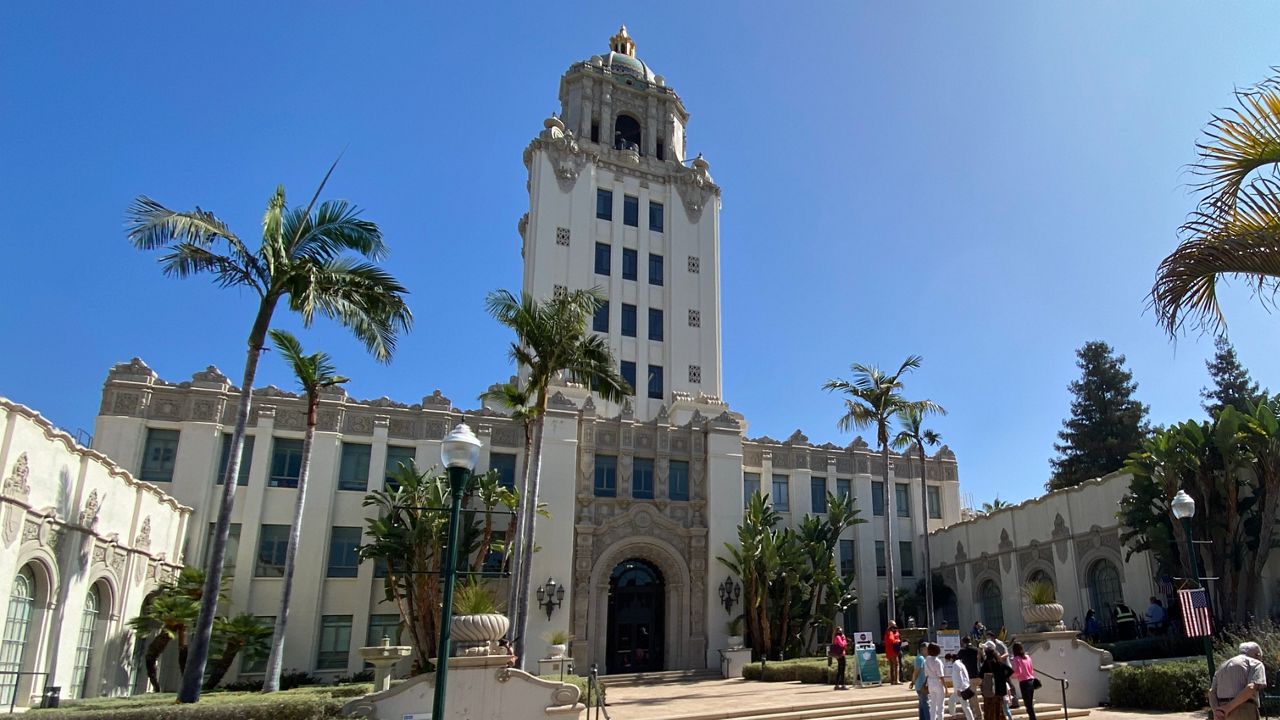BEVERLY HILLS, Calif. — Beverly Hills has set new limits on when and where protesters can demonstrate, just weeks after anti-vaccine and anti-mandate advocates crashed an Oct. 6 Walk to School Day event.
The restrictions, as approved at the Beverly Hills City Council’s Oct. 26 meeting, prohibit protests within 300 feet of entrances to the city’s elementary or middle schools; bans demonstrators from following students on their way to or from school; and bans protests from “interfering” with permitted events or separate protests.
The ordinance also bans protests within 100 feet of the main entrance to Beverly Hills High School as students are entering or leaving the campus; protests within 50 feet of a school playground; and protests that are distinctly audible within any school building.
“Kids don’t have a choice to go to school. They’re captive audiences, and they certainly deserve to be protected from the kind of trauma that someone like (anti-vaccine advocate) Shiva Bagheri inflicted upon them during the last protest,” Beverly Hills Councilmember John Mirisch told Spectrum News 1.
Mirisch was one of two City Council members initially advocating for the ordinance. Those protesters, he said, reminded him of the Westboro Baptist Church, the arch-conservative religious group that became known for its inflammatory demonstrations at memorials for victims of mass violence.
Bagheri, who was among the protesters on Oct. 6, has gained online infamy for her role in the protest. A video, recorded by a reporter for the Beverly Hills Courier, shows Bagheri yelling to a mother that her child will be “traumatized if you put that mask on him and you don’t let him breath through it.”
When asked how she reacted to the fact that the protest caused the city’s new ordinance, she called the City Council members “fascists.”
“The problem with this is, they’re chipping away at our constitutional rights. They have no right doing that, even if it hurts their feelings, even if they want to adopt the media narrative,” Bagheri told Spectrum News 1. “I’m a parent in the school district; I have every right as a parent to express my grievances that are going on at the school.”
The United States Supreme Court has, in a number of cases throughout the 20th century, ruled that restrictions may be made on the time, place and manner of protests, so long as those restrictions do not impose on the content of the protected speech, that they serve a specific government interest, and that they leave open alternative channels for communicating.
Peter Eliasberg, chief counsel and Manheim Family attorney for First Amendment Rights at the ACLU of Southern California, suggested that the ordinance as approved may be too overly broad to solve the problem of protesters intimidating students.
“Trying to make kids going to school afraid is pretty odious behavior. I get why a government might try to react to that,” Eliasberg said. “But I’m troubled that there seems to be an over-reaction to speech that governments don’t like, or ways that people behave when protesting.”
Eliasberg noted that the restrictions, including the 300-foot limit, might affect “all sorts of other demonstrations or protests,” from silent protests to protests about educational policy, by “preventing them from reaching their audience.”
More troubling, he said, was the provision restricting protests conducted at the same time and location as another parade, assembly, or permitted event.
“That makes me nervous…it reads, in effect, to prohibit counter-protests,” Eliasberg said. “Oftentimes, the purpose of counter-protests is to engage with protestors.”
As of publication, Beverly Hills City Attorney Laurence Wiener had not yet responded to a request to clarify how the city will determine whether a protest is taking place at the “same time and location” as other events.
The protest restrictions are already in effect under an identical emergency ordinance passed on Oct. 12. The regular restrictions, now introduced into the city’s municipal code, will take effect 30 days from Oct. 12.



